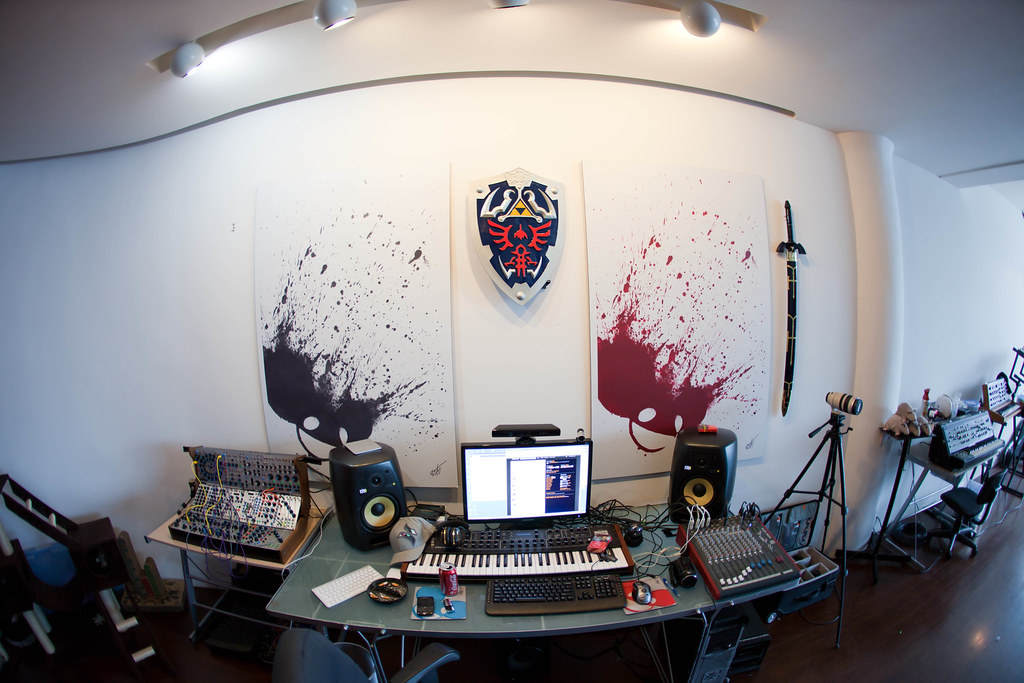Here we come with another collaboration from our friend Jeffrey Jones. In this case he talk about the Clef Products String Ensemble a.k.a. PE String Ensemble
"The construction details for the String Ensemble were published in Practical Electronics in 1978. It was designed as a version of the 'string machines' or orchestral synthesizers that were available at the time to produce a sound which would simulate the whole section of an orchestra. It was designed by Alan Boothman of Clef Products who also designed the Joanna and Band Box. The kit was supplied by Clef Products although Maplin also sold a kit.
The design was four octave based on a top octave generator chip, each note being further divided down by two several times to cover the range. Each note had a separate divide by two chip. The signal was then sent to a diode gate. Each note of the keyboard had a diode gate switch which simultaneously switched four octaves of the note through to the signal processing circuit when a key was pressed. This produced a harmonically very rich signal. A separate diode gate for each note also meant that the instrument was polyphonic.
The sound then went through a dual delay line with two slow oscillators running a different speeds controlling the delay to give a constantly shifting phase to give the effect of several instruments playing together. Finally the signal was sent to a filter circuit which had switchable filtering to simulate different sections of the orchestra.
There were filters for high and low strings and also brass and woodwind. These could be mixed together using sliders in any proportion. There were also sliders for adjusting the attack and decay. Finally the keyboard could be split to give a low, medium and high octave setting on the bottom third of the keyboard to accompany the other voices.
The sound was superb, especially considering it used purely electronic means to generate the notes. The top strings were especially rich and vibrant sounding. There was also a socket for the provision of a swell pedal to add extra feeling and realism to the sound.
The kit supplied by Clef was up to their usual high standard. The circuits were printed with the component positions on to make assembly easier and the wiring connections between the circuit boards were also marked. Everything needed to build the kit was available including the keyboard, cabinet and a printed front panel to give a professional appearance.
The building of the kit was generally fairly straightforward with just two exceptions:
The diode gate of each note consisted of twenty components which had to be fitted in the space allowed between each note. To achieve this some components were stacked on top of each other which made soldering quite difficult. Also the fact that each note needed twenty components meant that there were a total of nearly a thousand components just for the diode gates. This was a rather monotonous task.
The other problem was that each diode gate needed four buses to supply it requiring a total of nearly two hundred soldered connections. This was made more manageable by the special enamelled wire supplied with the kit in which the insulation melted upon soldering.
Although there was a lot of work involved in constructing the kit the result was well worth the effort. It worked first time with no problems. In the nearly 35 years which I have had it I have had only two problems with it, a smoothing capacitor failed and one of the top octave generator chips also failed.
I think that this was one of the best electronic instrument kits ever produced but despite this I have never seen any other mention of it on the internet and have never seen one for sale on ebay or anywhere else. I would be very interested to know if there are any other owners (past and present) out there."
Jeff not only made the pictures from his own instrument that you see here, he also he took sound samples so everyone can hear the instrument in its fullness (or you could split into individual files and load it into a sampler to play with it), the sound samples are recordings of all of the C, E and G notes of the top strings covering the full keyboard.
You can hear and download the sound samples here:
























